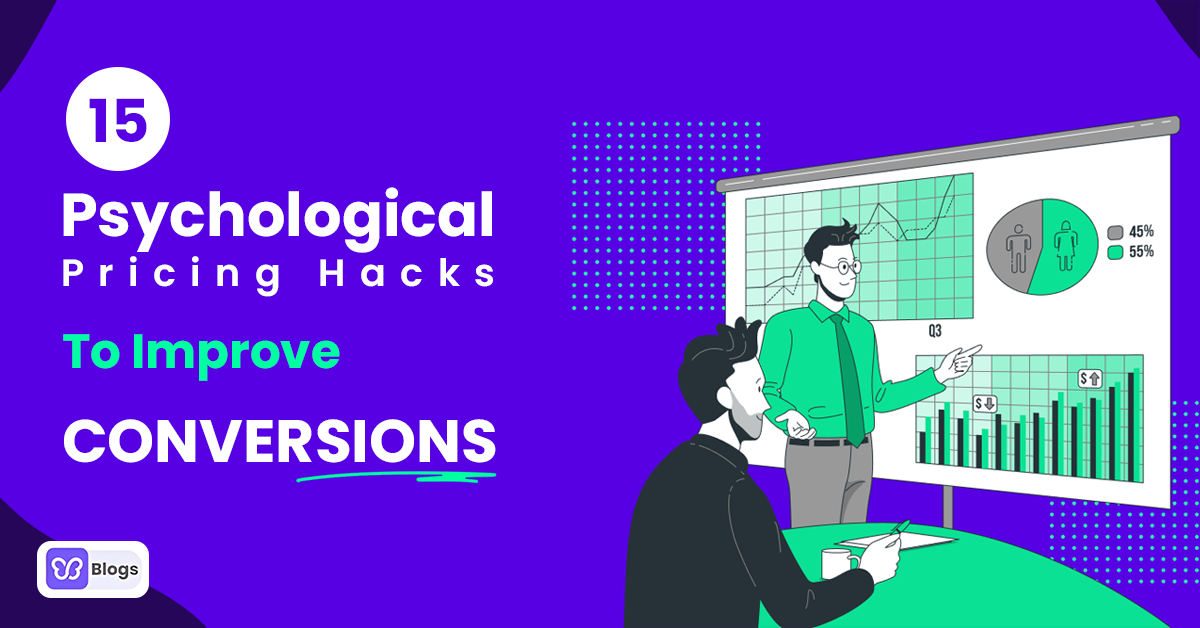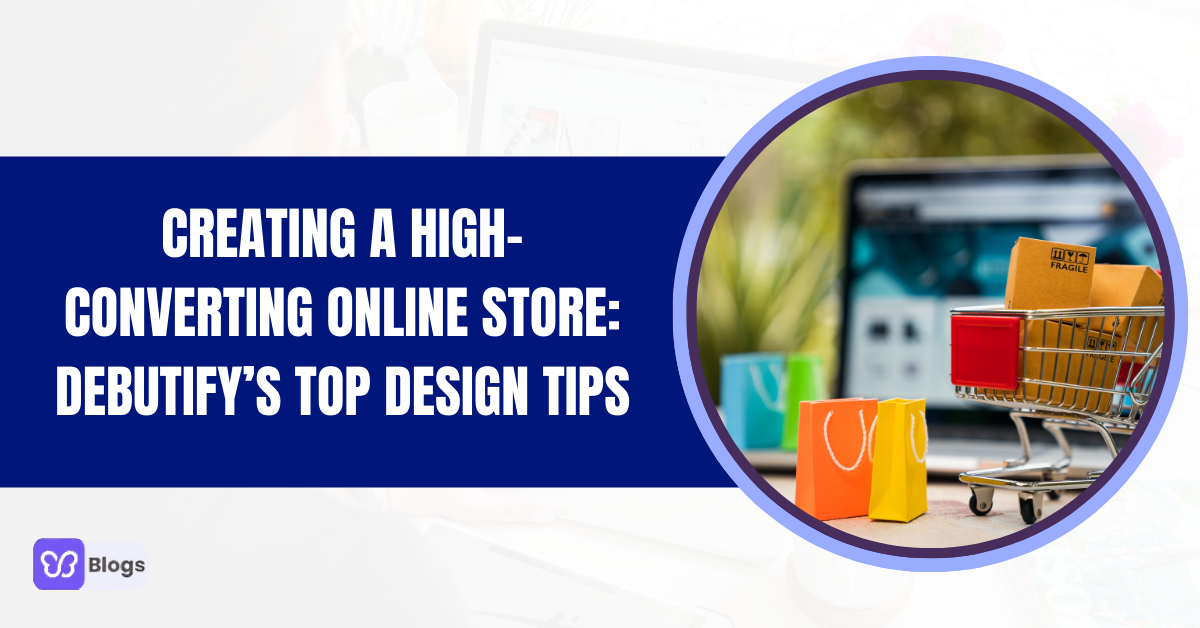Imagine that: You went to your favorite supermarket to buy some groceries. There were posters all around showcasing a BOGO deal and 50% off on some items. You walked in and bought products you didn't need. What was that? That is called pricing psychology.
When it comes to ecommerce, there is nothing more critical and influential than pricing. According to research, pricing is the top factor determining where customers shop.
The right pricing strategy not only attracts customers but also increases their likelihood to purchase.
Present-day customers are clever. They shop from different sources, including websites, apps, and social media, and use several price comparison tools to ensure they get the best value for their money.
The thing is, customers are smart, so if you want to excel in the world of ecommerce, you have to act smart too.
Now you must be wondering how you can increase conversions by keeping your customers happy.
Pricing is one of the most critical elements of e-commerce psychological strategies. It also sets the foundation for adding value to the e-commerce market, resulting in better profit margins and revenues for e-commerce stores and retailers.
After reading this post, you will be able to decide on a price point that converts. Excited? We’re too. Let’s begin.
What Is Psychological Pricing?
Psychological pricing is a marketing strategy that uses the power of human psychology to influence consumer purchasing decisions. Instead of focusing solely on cost or profit margin, businesses price products in ways that make them appear more attractive or affordable to potential buyers.
For example, pricing something at $9.99 instead of $10.00 can create the perception of a better deal, even if the difference is minimal. These subtle pricing cues can have a significant impact on customer behavior and sales conversion rates.
In today’s market, psychological pricing uses simple tactics like charm pricing, anchoring, and decoy pricing to help businesses sell more. These methods are designed to make prices feel more attractive to customers. When used correctly, psychological pricing not only helps increase sales but also makes your brand seem more trustworthy and valuable to buyers
Benefits Of Pricing Psychology
Psychology pricing comes with its pros and cons. While this tactic can work wonders for many businesses, it can cause more harm than good in certain situations. Before we highlight pricing hacks to improve conversions, you need to know the benefits and challenges that are part and parcel of psychological pricing techniques.
Boosts Attention
Implementing any psychological pricing technique will boost attention to your offer. Let's take the example of brick-and-mortar stores. These stores display huge signs showcasing several pricing psychology tactics that capture people's attention and persuade them to go inside and make a purchase.
Helps In The Decision-Making Process
The biggest benefit of using pricing psychology for your business is that it helps your customers make quick buying decisions. When consumers see they're getting a good deal, they don't think much about the price they're paying for the product.
When you're getting a product worth 50,000 in 25,000, you would immediately grab the deal without thinking that 25k is a huge amount too.
Improved Returns
When people are willing to pay more for your discounted deals, your conversion rate and ROI will automatically increase in no time. Pricing psychology can specifically do wonders for your brand during high-traffic holiday seasons.
With deals and promotions capturing the attention and interest of the masses, getting a high return on investment at the end of the day is obvious.
Triggers a Sense Of Urgency
Nobody likes to miss a profitable deal. Pricing psychology discounts trigger a sense of urgency and encourage customers to take timely action. The fear of missing out (FOMO) effect will persuade customers to act fast so that they won't miss a value-driven deal. Many customers will even start behaving like your brand advocates and refer your promotional deals to their friends and family so they can also benefit from your offer.
Pricing Psychology - Challenges
Risk Of Misperceived Value
While pricing psychology most of the time results in a profitable situation for the sellers, it also has a few challenges (especially when done wrong).
For example, the risk of misperceived value is always there when you implement any pricing psychology hack for your ecommerce online business.
Businesses trying to lower their prices to get more customers can also lose them. How? Your customers might think your products are of low quality as they come with such a reasonable price tag.
Short-Term Pricing Solution
Psychological pricing tactics do not offer a long-term solution. There is constant testing involved. Yes, you can enjoy temporary conversions if you're using upgraded pricing strategies, but you can't depend on them forever as they can significantly impact your business repo and damage the trust of your customers if implemented incorrectly.
Deceitful
Some customers can easily identify the commercial intent behind your pricing strategies. While some customers may accept those tactics as the essentials of running an e-business, others may consider it an approach to taking advantage of customers.
15 Psychological Pricing Hacks To Improve Conversions
1. Consider 2 Price Points
$5 or $4.99?
If you choose to go with the latter, you're not alone.
Why should you care about the left digit? That's because the human brain encodes digits so quickly that they evaluate the magnitude of a number before even finishing it. When you read $4.99 before reading the post-decimal value, you focus on the first number, making it easier for you to believe that $4 will always be less than $5.
Many brands implement the left-digit effect to attract sales and conversions.
2. Remove The Currency Symbol
Another interesting pricing hack to improve conversions is to remove the currency symbol from your price. The currency symbol in your pricing can remind customers of the 'pain of paying' and can cause them to spend less on your products and services.
But doing this isn't as simple as it may sound. Many times you have to include a dollar sign to enhance the overall clarity of your price.
Do not exclude currency symbols in such situations as it will give rise to confusion and may cause more harm than good to your pricing strategy.
3. A/B Test Your Prices
Online selling and split testing go hand in hand. Whether it is your website design, CTAs, or pricing, you can use A/B testing to determine what works best for your business.
Many online businesses have witnessed a remarkable increase in conversions by implementing split test practices for different site elements, including pricing. Tweak prices and test them to see which specific option would be best for your store.
4. Show Comparison Prices
Oftentimes psychological pricing isn't about how competitive your product prices are, but instead how strategically you position the pricing of your product compared to your competitor's product.
Similarly, you can compare the 'before' and 'after' prices of the same product to show how valuable your offered deal is. Many websites use this pricing psychology hack to increase conversions.
Even if two products are more or less the same in terms of price, you can reduce the price of one product leveraging the 'rule of 9' and then showcase them both side-by-side to improve conversions.
Debutify also allows you to set the compare price option to experiment in a wide range of 'before' and 'after' prices.
5. Display Prices In Smaller Font Size
Many user behavior studies highlight the significance of small fonts for ecommerce businesses. According to these studies, customers perceive product prices showcased in smaller fonts to be comparatively lesser than prices displayed in large font sizes.
No, you don't have to make any additional effort or choose any unique font type. All you need to do is reduce the font of pricing by a smaller percentage compared to what you have chosen for the rest of the content on your page.
Tip to consider: If you're comparing the 'before' and 'after' prices, only reduce the font size for the 'after' price.
6. Only Offer Discounts On Low-Priced Products
Handling discounts can be challenging at times. You may lose plenty of customers when you end your sale. Customers usually look for other discounted products when they see your brand returning to its original prices.
So, how can you deal with such a situation?
It's simple. Make sure you only offer discounts on your low-priced products. When brands end discounts on their high-ticket items, demand shifts toward low-priced options. But when they end discounts on their low-priced products, demand more or less remains the same in most cases.
7. Add The Word Sale With Discounted Products
The most obvious one. Did you know you can increase your conversion rate by adding the word 'SALE' next to your pricing?
For instance, write 'was $200, now $99 SALE'.
Now, increase the font size of the ‘Was’ price to make your SALE pricing look more prominent and attractive.
For instance, write 'was $200, now $99 SALE'.
Just perfect!
8. Offer Payments In Installments/Fragmented Pricing
What would you prefer, $42/month or $500 a year? In both cases, you have to pay $500 in exchange for a product or a service, yet there is a difference in perception when you compare these options side by side.
$500 sounds like a lot of money. Many customers avoid paying such hefty costs upfront as there is always a risk of not receiving a product after 2 or 3 months.
If possible, give your customers an option to pay in installments.
9. Shift The Focus From ‘Money’ To ‘Time’
A million-dollar pricing hack to improve conversions is to avoid references to money. Your goal as an online seller is to emphasize benefits that are truly valuable for your customers.
For instance, you can focus on time as it adds to the overall customer experience and helps your customers build a personal connection with your product.
Your content should also reflect how your customers can spend a memorable time using your products.
10. Context Pricing
For some people, $1000 may be a lot of money, while for others, it is nothing. The best psychological pricing strategy is to keep the pricing context in mind before you even try to lure your customers through your pricing techniques.
If we ask you to pay $1000 for a Mercedes-Benz, most of you will happily pay this amount. On the flip side, if we ask you to pay the same amount for a pair of shoes, you'll think thousands of times before agreeing to this price.
Context matters. We expect low prices in a thrift store, but won't mind paying extravagantly in a Nike store. You got that, right?
11. Offer Discounts On Bundle Deals
When you buy a smartphone, would you also purchase the cover for some additional cash?
Yes. Why? Because you won't mind paying a few extra bucks to keep your expensive smartphone safe. Product bundles are an effective conversion strategy that instantly improves your sales and conversions.
Many customers believe that they can save money when they buy things in a bundle deal. Also, people think that it is way easier to purchase relevant products together than to purchase them separately.
So yes, you must offer as many bundle deals as possible to increase your AOV.
12. Use Social Proof To Increase Conversions
Social proof is the best way to build trust. It's a human psyche to trust the recommendations of other like-minded individuals who have already invested in the products or services a person is about to buy.
So sprinkle product reviews all over your site to increase the motivation level of your prospects and help them convert.
13. Use Design-Driven Cues To Highlight Sale
The way you utilize your website design is critical for your business's growth and success. Make sure you use the best design elements to display your discounted items. Choose colors and fonts carefully, as these aspects significantly impact your buyer's decision.
14. Place An Expensive Product On The Left
Another proven pricing psychology tip to improve conversions is to sort your products by their pricing from left to right (descending order).
When customers see all the expensive products at the start, they'll automatically feel relieved to see a decrease in prices while going from left to right (top to bottom).
15. Offer Similar Products At Different Prices
Choices make decision-making tough for consumers.
It is very easy for your customers to feel overwhelmed when they see a bunch of similar products on your site with a similar price sticker. To avoid confusion, you can price your relevant products with a slightly different price tag.
You may also check out our podcast episode with Drew Marconi to learn more about pricing strategies.




